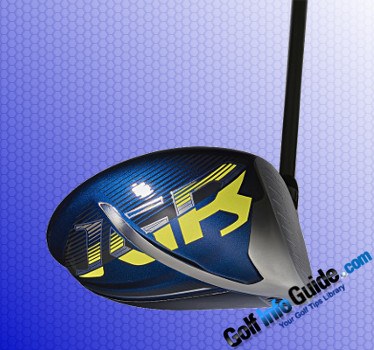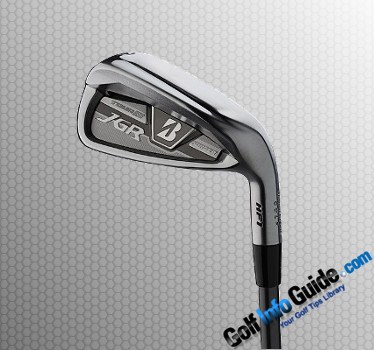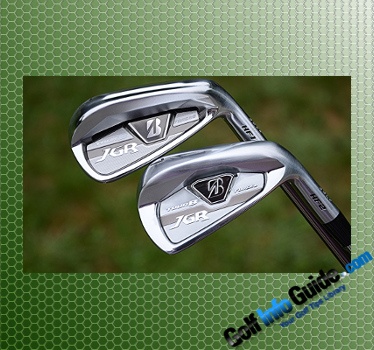Bridgestone unveiled recently their latest Tour B JGR driver, together with 2 brand spanking new iron models.

If you’re not familiar with the Tour B JGR series, you probably know everything about Bridegstone’s Tour B golf balls, as there are many Tour pros, including Tiger Woods, Brandt Snedeker and Matt Kuchar, who are using them on Tour. The thing is, the new Tour B JGR line of golf gear is just as good as the golf-balls, Tour quality good that is, featuring the company’s patented technologies to deliver top notch performance. The new Bridgestone B JGR family includes the driver (retails for $399), fairways (retail for $299), hybrids (retail for $219 each), HF2 irons ($899 MSRP) and HF1 irons ($849 MSRP). Bridegestone’s new family of golf products is aimed at renewing the company’s focus on power for the average player, but the Tour pros were not forgotten in the process. Everything in the new Tour B JGR line of woods and irons is about that extra mile, and by that I mean taking distance a notch higher. To accomplish this mission, Bridgestone built their new woods and irons with a very thin and flexible face, which is crucial for achieving more distance.
The Bridgestone JGR line first saw action back in 2015, and the latest generation offers a driver, a fairway wood, a hybrid and 2 irons. The former (the driver that is) has been already tested by the company’s staff tour pros, Brandt Snedeker and Matt Kuchar respectively. The irons and the metalwoods use what Bridgestone describes to be a state of the art feature, a distance enhancing technology called “power slit”. The power slit thing was used previously in the company’s past Tour B and JGR lines, and to put it in layman's terms, the “slit” is basically a thin area which is located around the leading edge of the irons and on the crown of the metalwoods. The power slit technology makes the respective areas to flex a bit upon ball impact, thus allowing the face to bend more, with the end result being increasing distance in a trampoline-like action.

In the new Bridgestone Tour B JGR driver, the power slit makes for a narrow channel, located in the front part of the crown. To make the crown more flexible, its rear portion is also thinned out (Bridgestone calls this a “boost wave crown”), and that results in improved energy transfer to the ball and hence, more distance. There’s also a rib structure that comes into play, running across the front of the sole, to further improve flexibility. Here’s Zack Kupperbusch talking about the power rib sole in the new Tour B JGR Driver:
“What we’re most excited about in the driver is the power rib sole. The power rib keeps the sole very stable and allows the crown to flex more, creating higher initial ball speeds and launch angles.”
The driver also features the company’s power mill face design, just like the woods. This innovation helps with delivering low spin and it works by prolonging the time the ball stays in contact with the face at impact. Together with the new crown design, the power face mill adds to increased ball speeds, distance and higher launch. Here’s Kupperbush explaining how the Power Rib Sole and the Boost Wave Crown work together in sweet harmony:
“With the Power Rib Sole, we’re keeping the sole as stable and as firm as possible. When you combine that with the Boost Wave Crown – which allows the crown to flex – you create a trampoline effect.”

The Bridgestone Tour B JGR driver features 25 grams of internal weight, along with a 10 gram external weight screwed in the heel, which can be used to promote draw bias for golfers who fight a slice. Here’s Bridgestone’s Kupperbusch again, discussing the new power-mill face design in the Tour B JGR driver:
“Compared to the previous JGR, the depth of this mill is doubled. It’s still within USGA regulations, but we’ve doubled the depth to increase the Quality Compression Time. It keeps the ball on the face a little longer and prevents skidding, which helps reduce spin.”
Let’s talk a little bit about the new Tour B JGR irons, the HF1 and HF2 respectively. Both of them are built around the same concept as the driver, i.e. thinned out structures and an ultra thin face. Bridgestone used forged 1030 carbon steel for creating the HF1 and forged 1025 carbon steel for the HF2, and that’s pretty interesting, since the vast majority of sticks in this category are cast. The power-slit technology is present in both irons, and it consists of a thinner junction of the face and sole (compared to the surrounding areas), which is designed to work as a hinge upon ball impact, increasing ball speed and promoting higher launch. Here’s Kupperbush again:

“The HF-1 consumer is looking for distance and wants to get the ball up in the air. We really want to make this enjoyable to hit. While it is super game improvement, I’d categorize it as a game enjoyment club. This isn’t for the guy who needs to shape it or hit specific windows. It’s for the guy – or gal – who wants to hit it as far as he can, keep up with his buddies and just have fun.”
One peculiar thing about the HF1 iron is its extremely low center of gravity. However, the HF2 iron comes with amazing game improvement features. Again, Mr. Kupperbush on the new HF2 iron:
“We’re targeting golfers who know they need forgiveness but might be conscious of what their clubs look like. They’re not going to be turned off by these. This golfer knows he needs forgiveness, but wants a traditional looking iron as opposed to a big, bulky looking thing. This is more of a traditional shape that’s going to be appealing at address.”
If you’re a higher handicap golf player, the HF1 model would work best for you, due to its extremely low center of gravity and hollow cavity design, which promote straighter, higher launching shots. Its forged construction works amazing in terms of feel, while the variable face thickness technology delivers balanced performance all across the face. The HF2 would make for the “weapon of choice” for mid-handicappers and/or people looking for traditional feel mixed with the latest in terms of game improvement performance. The HF2 irons also feature extremely thin faces, for more ball speed and higher COR, along with rubber polymer inserts, for improved sound and feel and for dampening vibration.
The greatest thing about the new Bridgestone Tour B JGR line is that it offers 2 types of HF irons, pleasing golfers looking for either a max game improvement club or a “vanilla” game improvement piece of golf gear, along with the feel of a forged “stick”, which delivers what we all expect from such products: distance and forgiveness.

Last but not least, a few words about the Bridgestone Tour B JGR fairway woods. Retailing for $399 (MSRP) with UST Mamiya Recoil 460 ES shaft and Golf Pride grip in 15 and 18 degrees, the newest fairway woods from Bridgestone are designed to please golfers looking for lower spinning/higher flying shots off the tee and, obviously, from the fairway. Needless to say, the Tour B JGR fairway woods are the perfect companion for the Tour B JGR driver, sharing a number of technologies, including the flexing-crown (the Boost Wave Crown technology) and the variable face thickness. Coupled together, these tech innovations promote ball speed and a higher launch angle. The milled face of the Tour B JGR fairway woods further increases distance and reduces spin, due to a special pattern of grooves that extends from toe to heel. The Power Milled Face design reduces spin by keeping the ball in touch with the contact area of the face, the hitting area that is, for a longer period of time.
Brigestone’s Tour B JGR 2018 collection is designed to deliver outstanding performance for a variety of players. Let’s end with a final word from Zack Kupperbusch, from Bridgestone Golf Club Marketing:
“Our JGR lines have built up a loyal following since the original launch in 2015. The new TOUR B JGR builds on that success by providing golfers with the combination of style and forgiveness. While our brand is commonly associated with the best golf balls in the world, JGR is an excellent example of how we’re bringing innovation to all corners of the industry.”





